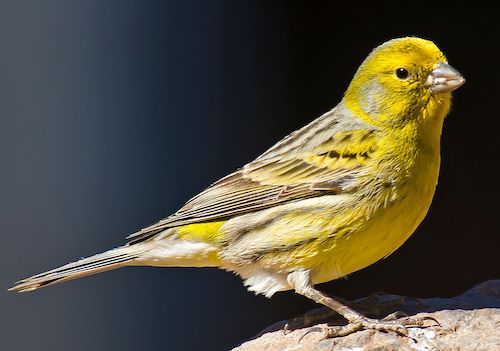Gran Canaria

Birding Gran Canaria
Gran Canaria, perhaps the most interesting island from an overall ecological point of view, does not boast any endemics of its own but it is a good place for the endemic Berthelot’s Pipit, Canary and the ever-present Canary Island Chiffchaff. Its most spectacular inhabitant is the Gran Canary Lizard, actually the largest of the 6 endemic Gallotia lizards on the islands. It is exceptionally common almost everywhere and is particularly fond of tomatoes. The endemic skink is also well worth watching out for, especially in the south of Gran Canaria where it sports a bright, electric-blue tail.
Return to the Canaries page: Canary Isles Main Page
Organisations
-
Sociedad ornitologica Canaria
Facebook PageThe blue finch of Gran Canaria is a bird in danger of extinction that has not recovered in the last 25 years partly due to bad management.
Trip Reports
-
2013 [09 September] - Eric Jan Alblas
PDF Report…After receiving information about Blue Chaffinches being recently seen on Gran Canaria, I made plans for a quick visit to see this and some other endemic subspecies. Travel to the Canary Islands is usually easy to arrange and this time was no exception… -
2017 [11 November] - Bob Swann
PDF ReportOur first full day on the island started with us watching Canary Island Chiffchaffs and Sardinian Warblers in the bushes outside our apartment. Collared Doves, Hoopoe, Blackbirds, Spanish Sparrows and a pair of Tree Sparrow were feeding in the well-watered grassy area in front of the apartment complex. After visiting a market on the edge of down we walked down the banks of a (dry) canal towards the coast. The scrub held Canaries, Goldfinch, a Greenfinch, small flocks of Common Waxbills, whilst overhead we had a flock of 20+ Plain Swift. -
2019 [03 March] - Julian Hughes
PDF ReportThis is a very brief report on a visit to Gran Canaria that we made in March 2019. It wasn’t a birding trip, but inevitably I did note my sightings on BirdTrack, and also made a special effort to see Gran Canarian Blue Chaffinch, which had been split from the Tenerife version since I visited that island a number of years ago. -
2021 [12 December] - Roland van der Vliet
PDF Report.... All day in the north. Through ebird, I had found two sites where Eurasian Stonecurlew and Long-eared Owl had recently been seen. First tried the site of Eurasian Stone-curlew at Charcas de los Alemanes near Arucas (accessible via the GC-3, GC-20 and GC-300) but without success even though we walked along the entire terrain. After that we went to the nearby site of the Long-eared Owls (the village square of Banaderos) but unfortunately also without success. We had lunch and shopped in Las Palmas de Gran Canaria afterwards. On the way back we bought sushi at the Carrefour in Vecindario... -
2022 [03 March] - Ian Merrill
PDF ReportOur February/March 2022 trip to Gran Canaria was a rather focused visit, specifically planned around what is now the single-island endemic, Gran Canaria Blue Chaffinch. Following it's split from Tenerife Blue Chaffinch, this high altitude Canarian Pine specialist carriesthe unenviable accolade of being one of the rarest birds in the Western Palearctic, with a global range of just 40 km2 and a population little higher than four hundred birds.
Other Links
-
Gran Canaria Flora and Fauna
InformationMany of the birds found in the Canary Islands are either endemic species or subspecies, with many examples of races unique to individual Islands. This phenomenon is often found on islands where species are allowed to evolve in isolation
